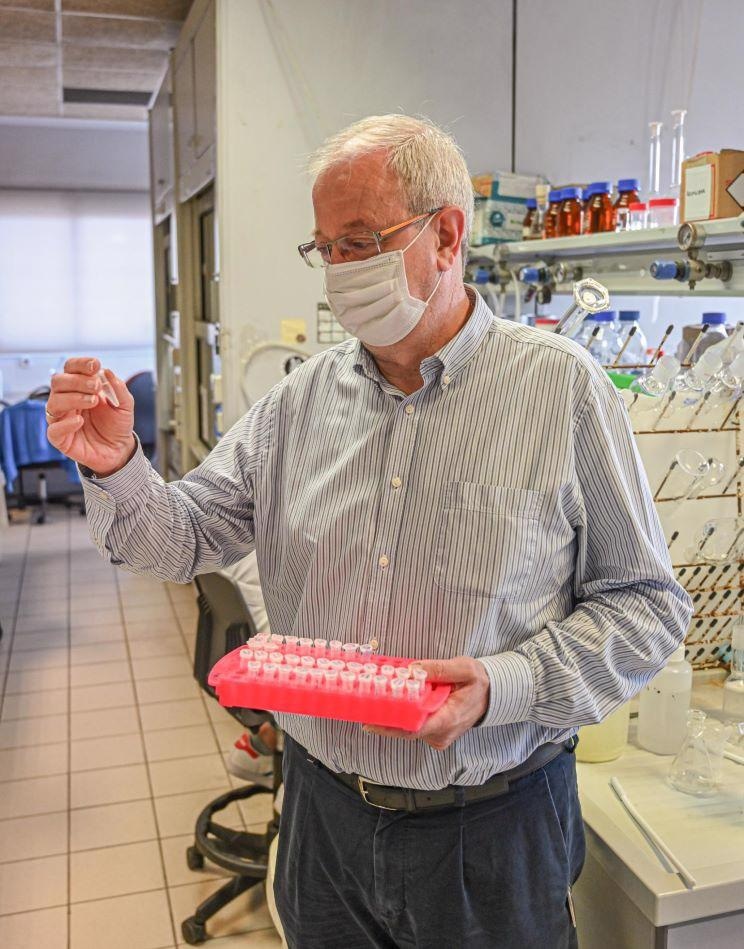May 21 2021
At the laboratory level, a group of Spanish scientists has developed a prototype of a new biosensor that can detect breast cancer in its initial stages.
 Ramón Martínez Máñez, professor at the Universitat Politècnica de València (UPV) and the scientific director of the Networking Biomedical Research Centre in Bioengineering, Biomaterials and Nanomedicine (CIBER BBN). Image Credit: UPV.
Ramón Martínez Máñez, professor at the Universitat Politècnica de València (UPV) and the scientific director of the Networking Biomedical Research Centre in Bioengineering, Biomaterials and Nanomedicine (CIBER BBN). Image Credit: UPV.
One of the coordinators in the team is Ramón Martínez Máñez, who is a professor at the Universitat Politècnica de València (UPV) and the scientific director of the Networking Biomedical Research Centre in Bioengineering, Biomaterials and Nanomedicine (CIBER BBN).
The other coordinator was Ana Lluch, a Valencian oncologist, co-coordinator of the Breast Cancer Biology Research Group of the INCLIVA Health Research Institute of the Hospital Clínic de València, and also a member of the Networking Biomedical Research Centre in Cancer (CIBERONC).
Their study has been published in the ACS Sensors journal.
As per the new data gathered by the European Cancer Information System (ECIS), in Spain, 34,088 new cases of breast cancer were diagnosed in 2020. Moreover, this type of tumor was the most frequent in women of this country.
At present, mammography is the most extensively employed standard method for breast cancer diagnosis, but it has a few limitations, like radiation exposure, as well as lower specificity and sensitivity in young women with dense breast tissue.
Therefore, new diagnostic tools are needed to aid in the early detection of breast cancer. Our biosensor is along these lines.
Ana Lluch, Valencian Oncologist and Co-Coordinator of Breast Cancer Biology Research Group, INCLIVA Health Research Institute, Hospital Clínic de València
The biosensor’s development forms part of the field called liquid biopsy, which enables the detection of the occurrence of cancer via a blood test.
The mesoporous biosensor designed by the UPV-INCLIVA team is economical, user-friendly, and offers results in a very short period of time—between 30 and 60 minutes—from a patient’s plasma sample.
The biosensor is made of a nanomaterial, which is nanoporous alumina, enabling easier plasma detection of miR-99a-5p microRNA, which is linked with breast cancer.
So far, this has been performed through laborious and complicated methods, which implies that this system could not be utilized as a diagnostic tool in the clinical setting.
Martínez Máñez describes how their alternative diagnostic system functions: the nanopores of the biosensor are filled with a dye (rhodamine B) and closed with an oligonucleotide.
In case the pore gates do not detect the occurrence of the microRNA while interacting with the plasma sample, they tend to remain closed. On the other hand, when the miR-99a-5p is present, the pore gates open and the dye is discharged.
The change in dye release can be correlated with either healthy or breast cancer patients.
Ramon Martínez Máñez, Professor, Universitat Politècnica de València
Researchers from the IIS La Fe Institute for Health Research, where the tests for the validation of the new biosensors were performed, and the Networking Biomedical Research Centre in Cancer (CIBERONC) also contributed to the development of this biosensor.
The next step in our work will be validating our system in a larger group of patients.
Ramon Martínez Máñez, Professor, Universitat Politècnica de València
Journal Reference:
Garrido-Cano, I., et al. (2021) Nanoporous Anodic Alumina-Based Sensor for miR-99a-5p Detection as an Effective Early Breast Cancer Diagnostic Tool. ACS Sensors. doi.org/10.1021/acssensors.0c02222.